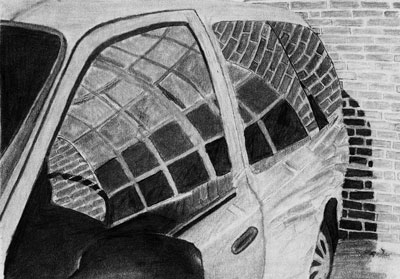All Nonfiction
- Bullying
- Books
- Academic
- Author Interviews
- Celebrity interviews
- College Articles
- College Essays
- Educator of the Year
- Heroes
- Interviews
- Memoir
- Personal Experience
- Sports
- Travel & Culture
All Opinions
- Bullying
- Current Events / Politics
- Discrimination
- Drugs / Alcohol / Smoking
- Entertainment / Celebrities
- Environment
- Love / Relationships
- Movies / Music / TV
- Pop Culture / Trends
- School / College
- Social Issues / Civics
- Spirituality / Religion
- Sports / Hobbies
All Hot Topics
- Bullying
- Community Service
- Environment
- Health
- Letters to the Editor
- Pride & Prejudice
- What Matters
- Back
Summer Guide
- Program Links
- Program Reviews
- Back
College Guide
- College Links
- College Reviews
- College Essays
- College Articles
- Back
The Boa Constrictor of the Desert
America’s vast landscape and immense diversity has made it a sought-after country. With roaring streams, towering mountains, and forests so extensive a person feels there’s no end to them; America is truly unique. It takes hundreds of millennia for its many natural wonders to form; the Grand Canyon being no exception. The Grand Canyon is home to a jaw dropping ecosystem that has been thriving longer than people have inhabited America.
Plush clouds cover the topography and ensnare the raptors circling for prey. They are soon lost behind mother nature’s blanket, but not forgotten. The small rodents sniff the air to tell which direction danger will approach from. Herbivores sprint away from potential annihilation. Adrenaline courses through their small bodies as they search for safe haven. In the animal kingdom it’s survival of the fittest, and the sluggish animals become a predator’s dinner. The faster ones will make it to the safety of a quiet impenetrable safe hold.
Nearby, bighorn sheep are grazing on sedge before ascending the canyon. With steady hooves, they begin their climb. They are fearless; jumping from cliff to cliff without hesitation. Unbeknownst to them, prowling nearby is 150 pounds of ravenous feline. With rippling muscles it creeps along waiting for an opportunity to pounce. The bighorn sheep stumbles as it nears the top. There is no sound as the cougar springs toward the unsuspecting sheep with claws extended in anticipation of dinner. It begins dragging the corpse back to its den, but flinches when it sees movement in a nearby rock outline. There is a bird flapping its wings in its nest. Seeing there isn’t a threat, the cougar continues on its way.
In preparation for flight, a bald eagle checks to make sure her nest is secure. Musty feathers and skeletal remains litter the floor. In the midst of this, are her hatchlings. Their cries of hunger pierce the air and cause their mother to chirp soothingly. When she feels her babies are safe, she leaves her nest to soar through the air. While looking down for unsuspecting prey, she spots a defenseless turtle and hastily begins her descent. Downward she spirals, snatching the turtle from the river bank. Sounds of triumph can be heard as the raptor flies home to feed its newborns, but it won’t be long before she returns to the skies.
Under the sky is a desert oasis filled with rushing water that cascades over treacherous waterfalls. The Colorado River is the Grand Canyon’s lifeblood. It inundates the dry desert sand to make the land habitable. Schools of round bodied sucker fish overwhelm the shallow water’s surface. Jumping over each other, they race downstream to scavenge for food. The fish slink down beneath the undulating waves. Opening their fleshy lips, they devour the algae and snails that congregate there. They continue moving downstream until there is a deafening roar coming from the water.
The noise continues to get louder and louder. The water quickly gains momentum as it nears the edge; there is no escape. Its swirling waters are painted with the shiny scales of fish falling over. During the dive many fish are flung out of the water, and left gasping for breath during the free-fall. Body after body plunges into the lukewarm water below, and when they surface, the smell of freshly turned soil greets them.
To the left of the river are hundreds of rock outlines that give the canyon its name. From close up the canyon is dull and without character, but from afar it’s dazzling. When the light shines just right, the rocks sparkle from violet and red, to blue and green. There are also shapes concealed within the rocks. Horses can be seen galloping across the isolated desert, a once proud Indian chief patiently waits for the white man to flee, and fish swimming aimlessly through the river.
From this distance, the river looks to be the width of a boa constrictor. It twists and turns throughout the terrain but soon disappears behind the setting sun. As the sun sets, its turns the sky into blinding yellows and reds. Screaming from the sky in frustration, they bleed together in one last effort to be seen, but this effort is frivolous. Soon, they turn into a black night infiltrated with sharp points of light.
Now is the time for the daywalkers to go to sleep. The fish float near the bottom of the river, the cougar seals himself into an easily defendable corner of his den, and the baby eagles rest beneath their mother’s wings. All is calm and quiet as the wildlife recuperates from the previous day.

Similar Articles
JOIN THE DISCUSSION
This article has 0 comments.
